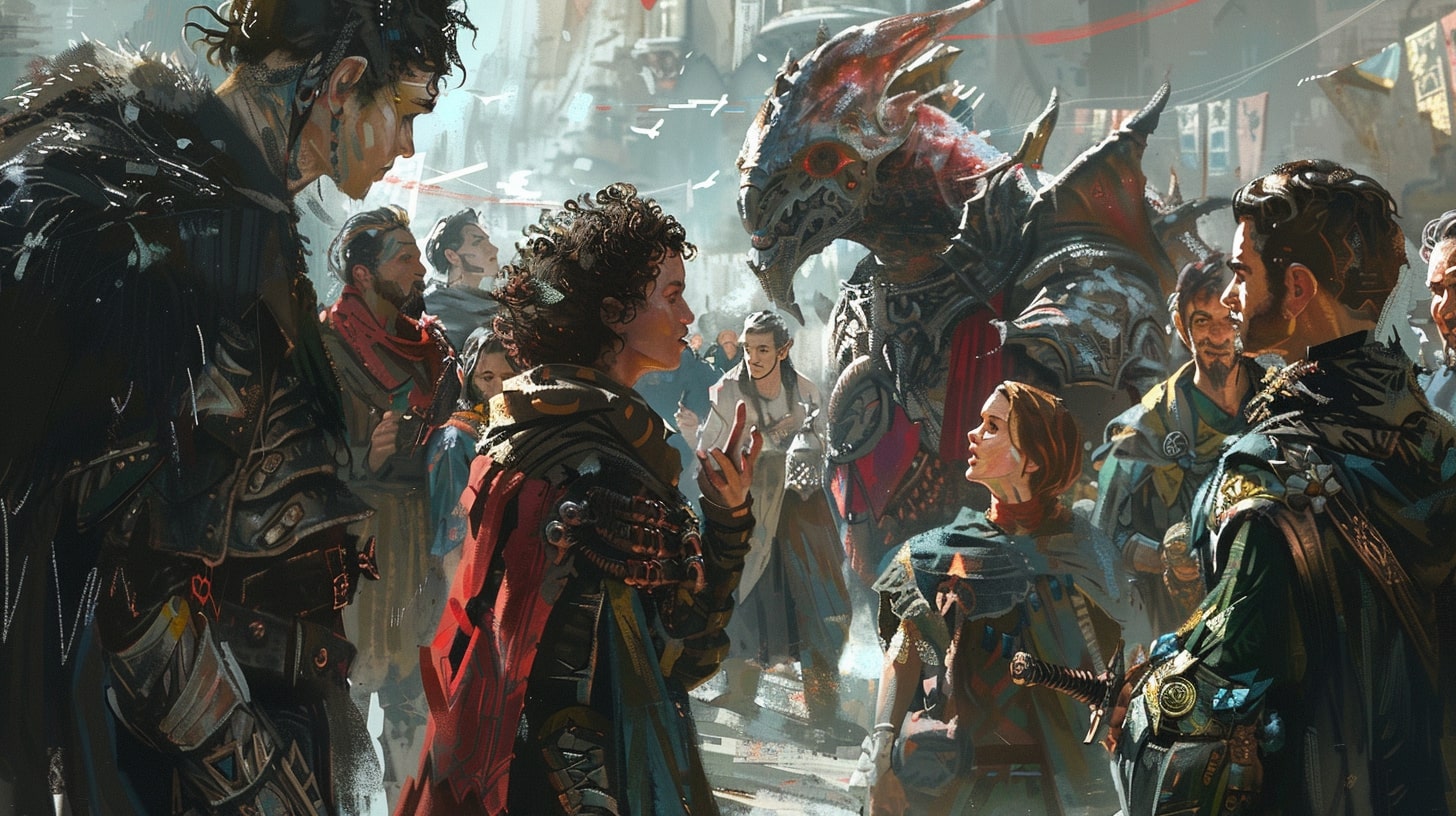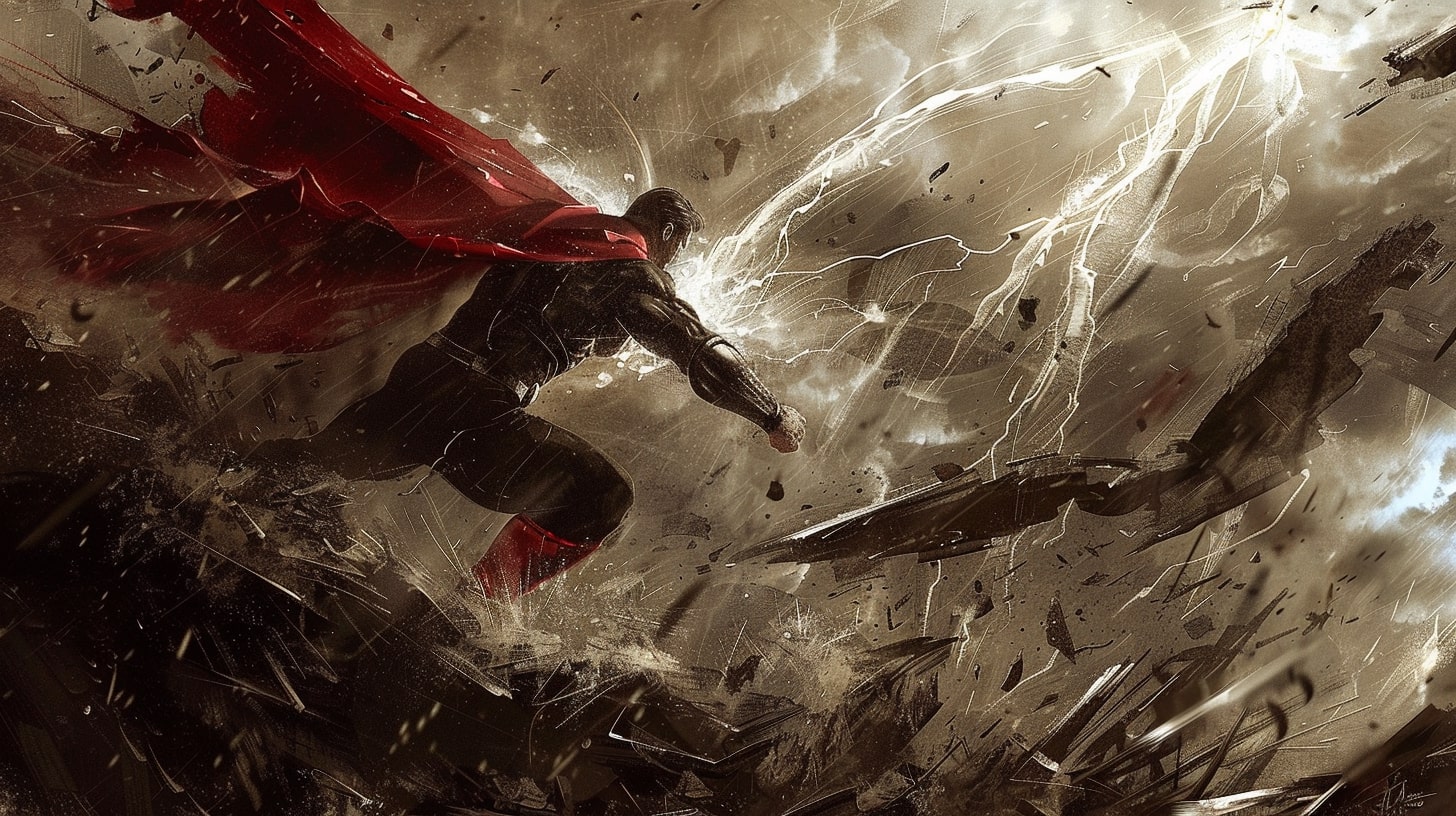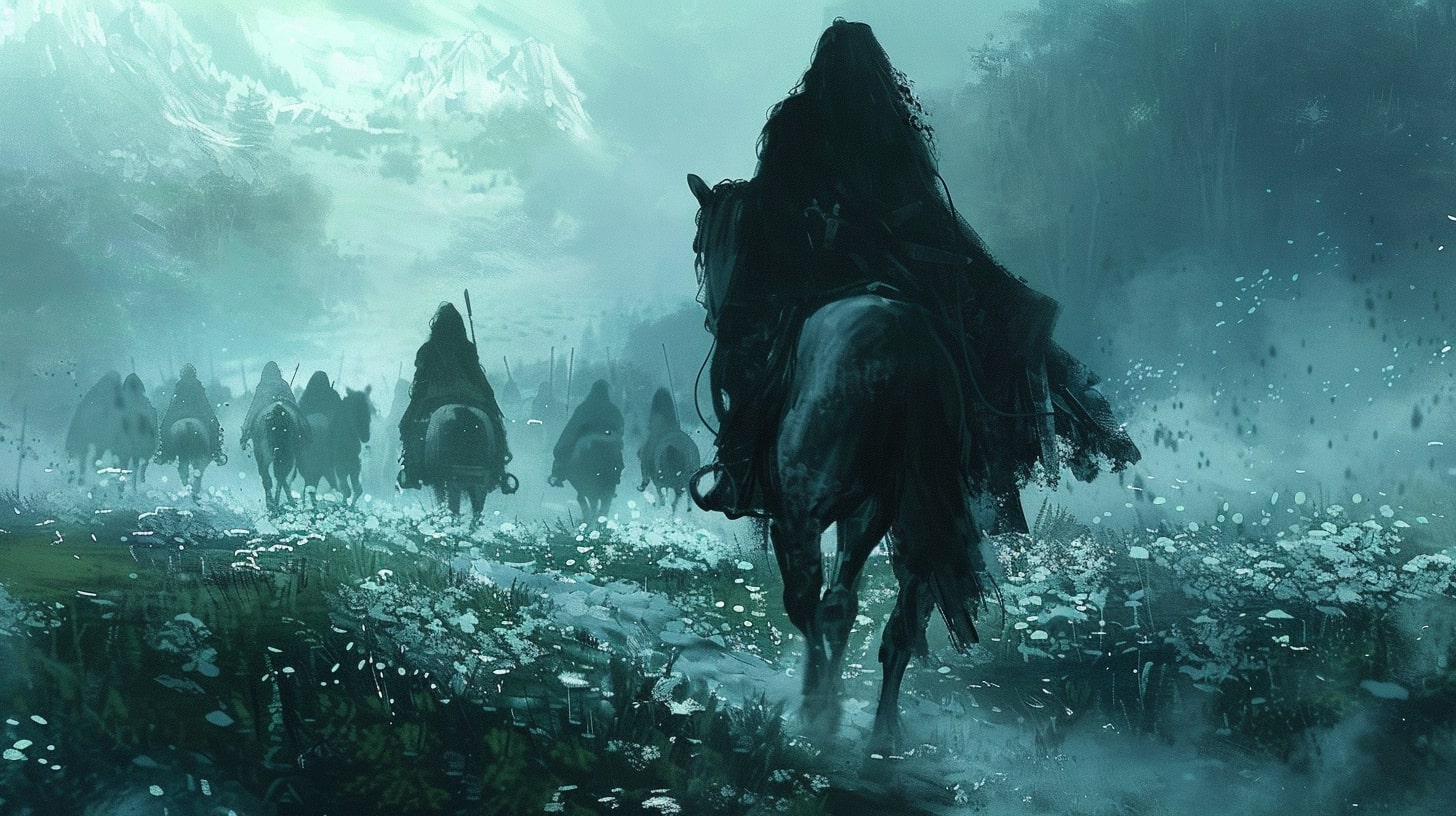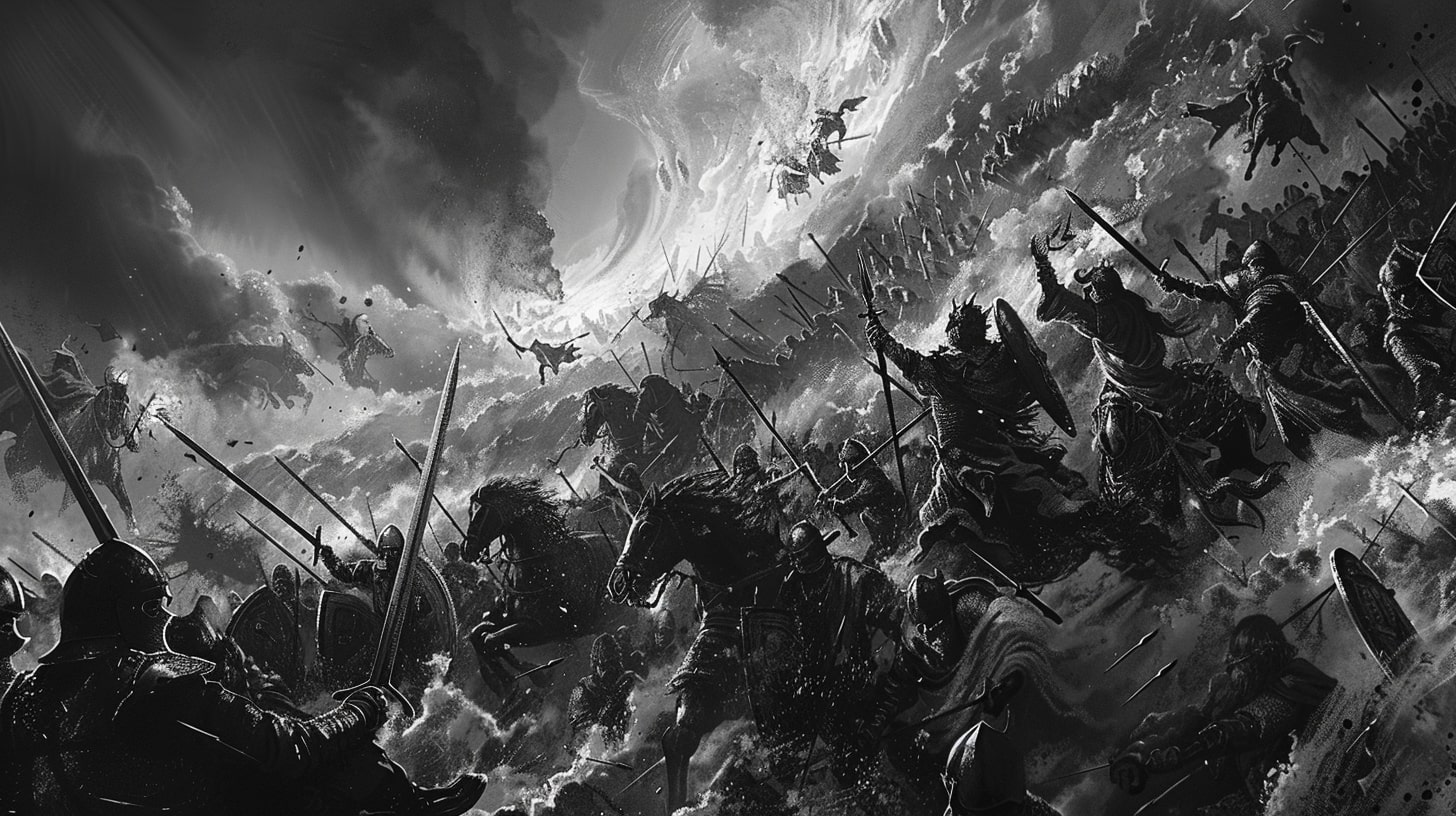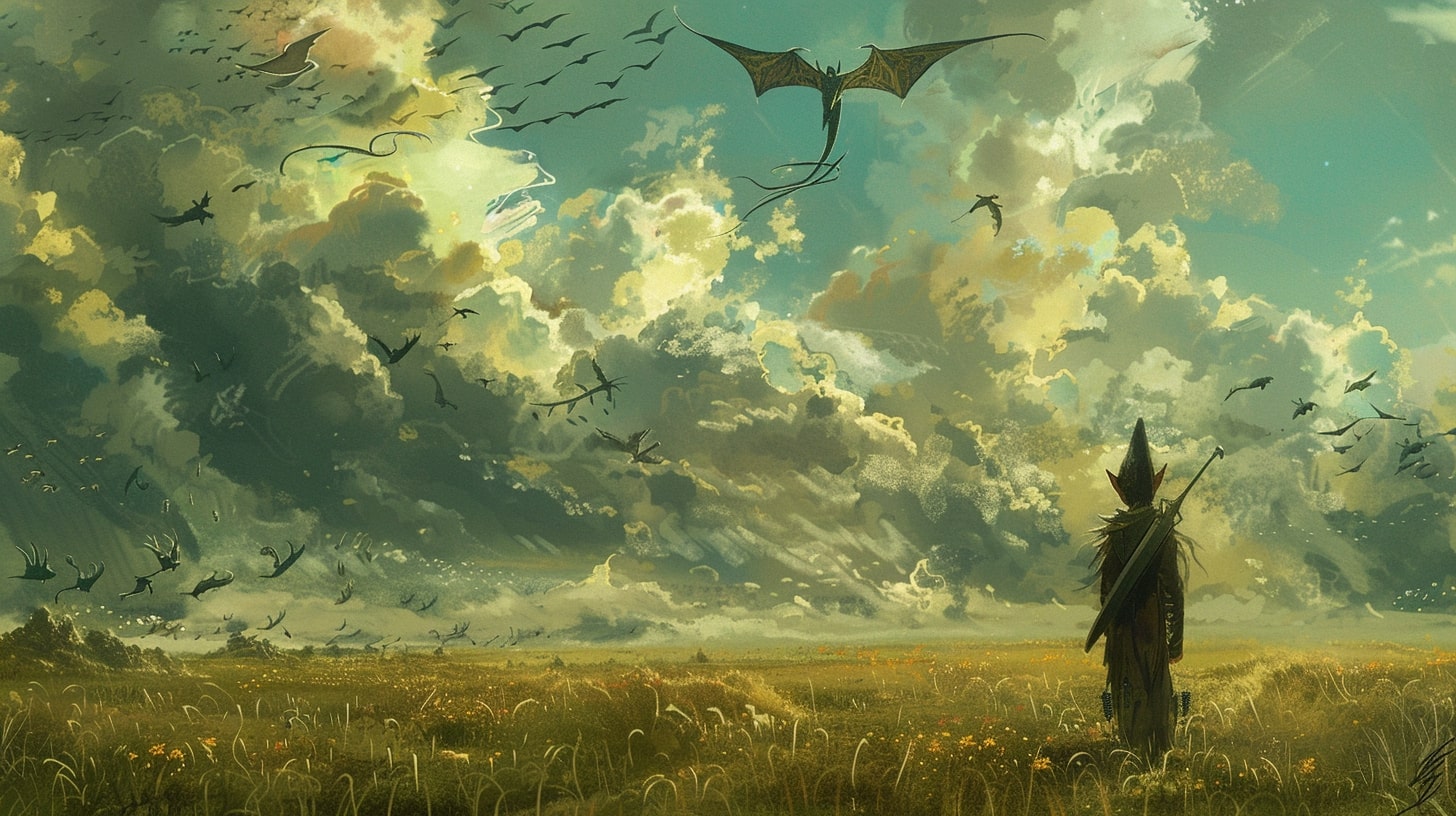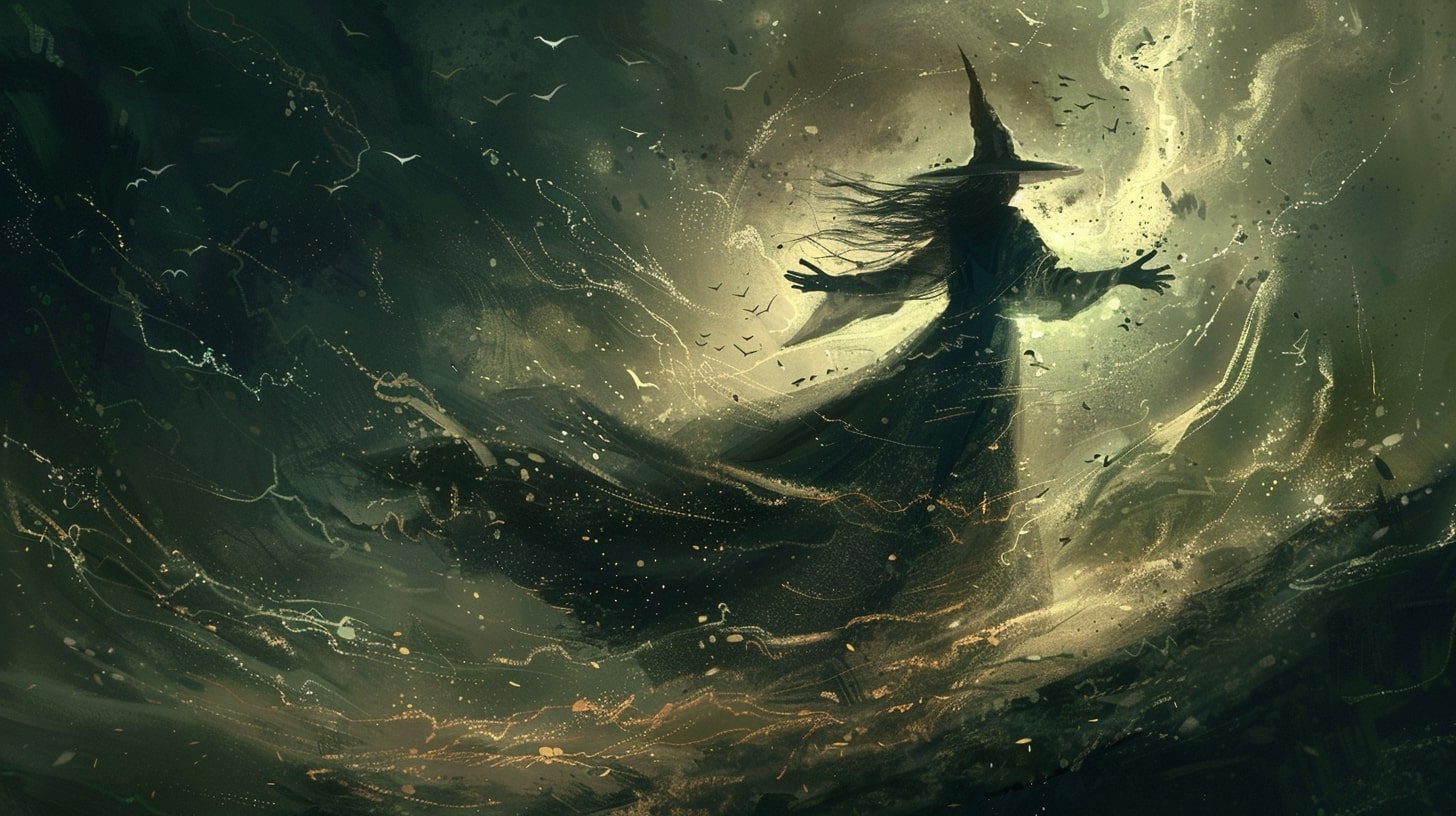Unleashing Your Imagination
To embark on the journey of crafting captivating fantasy adventures, you must first unlock the power of your imagination. Fantasy adventures allow you to explore magical realms, epic quests, and extraordinary characters.
Are you really doing any type of fantasy writing if there isn’t some sense of adventure? Great stories have great characters that must go through change and having an adventure is a great way to make that happen.
So let’s find out the best way to start crafting fantasy adventures that your readers love.
The Magic of Fantasy Adventures
What sets fantasy adventures apart is their ability to transport readers to enchanting worlds beyond their imagination. These stories are filled with mythical creatures, awe-inspiring magic, and epic battles between good and evil. As a writer, you have the opportunity to create worlds where anything is possible, captivating readers with your imagination.
Fantasy adventures ignite the sense of wonder and escapism, allowing readers to delve into realms where the ordinary becomes extraordinary. By immersing yourself in the world-building process, you can create a tapestry of intricate details, unique cultures, and fantastical landscapes. For more tips on creating a captivating fantasy world, check out our article on creating a fantasy world.
Tapping into Your Creativity
Crafting a compelling fantasy adventure requires tapping into your creative wellspring. Here are a few tips to help you unleash your creativity:
Immerse yourself in the genre: Read widely within the fantasy genre to familiarize yourself with different subgenres, writing styles, and world-building techniques. This will inspire and inform your own storytelling.
Embrace brainstorming: Let your ideas flow freely by brainstorming without judgment. Allow your mind to wander and explore different possibilities. This will help you generate unique concepts and storylines. Need help brainstorming? Our article on brainstorming sci-fi story ideas can provide useful techniques.
Draw inspiration from mythology: Delve into the rich tapestry of mythology from various cultures. Mythological creatures, gods, and heroes can serve as a wellspring of inspiration for your own fantasy world.
Create a writing routine: Establish a writing routine that works for you. Whether it’s writing at a specific time of day or setting word count goals, consistency will help you stay in touch with your creativity.
Explore different writing exercises: Engage in writing exercises specifically designed to spark creativity. Try free-writing, creating character profiles, or crafting short stories set in your fantasy world.
Remember, writing fantasy adventures is a journey that requires patience, dedication, and an open mind. Allow your imagination to run free and embrace the limitless potential of the genre. By tapping into your creativity, you can craft captivating stories that transport readers to extraordinary realms.
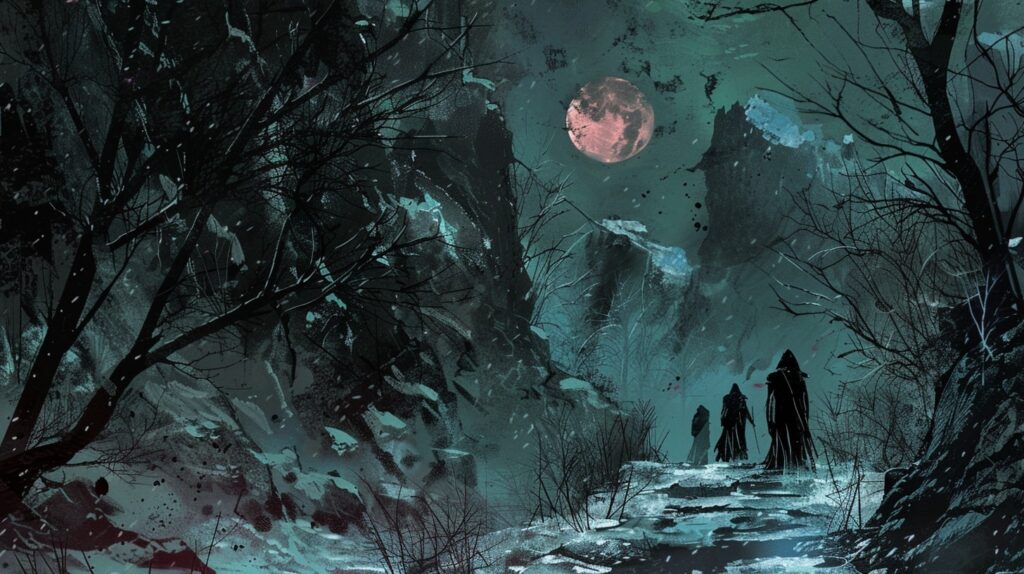
Crafting Fantasy Adventures: Building a World
To craft an immersive fantasy adventure, building a captivating world is essential. Creating a unique fantasy world allows your readers to escape into a realm filled with magic, mystery, and wonder. In this section, we will explore the process of creating a unique fantasy world and developing the setting.
It’s time to start worldbuilding!
Creating a Unique Fantasy World
When creating a fantasy world, let your imagination run wild. Start by envisioning a world that is vastly different from our own, with its own rules, culture, and history.
Consider the elements that make your world unique, such as the presence of magical creatures, mythical beings, or even a parallel universe. Think about the geography, climate, and architecture that shape the world’s physicality.
To ensure consistency and believability, establish a set of rules and logic that govern the world. These rules can include how magic works, the limitations of certain abilities, or the impact of fantastical elements on the environment. This will help create a cohesive and immersive experience for your readers.
Remember to pay attention to the details that make your fantasy world come alive. Describe the sights, sounds, and smells that define the atmosphere. Incorporate cultural nuances, traditions, and social structures to add depth and authenticity to your world. By infusing your world with unique elements, you can transport your readers to a realm beyond their wildest dreams.
Developing the Setting
The setting of your fantasy adventure plays a crucial role in shaping the narrative and engaging your readers. Whether it’s an enchanted forest, a sprawling cityscape, or a mystical realm, the setting serves as the backdrop for your story.
When developing the setting, consider the influence it has on your characters and their journey. How does the setting impact their decisions, shape their beliefs, or present obstacles for them to overcome? By intertwining the setting with the plot and characters, you create a dynamic and immersive experience for your readers.
To further enhance the vividness of your setting, utilize descriptive language that engages the senses. Paint a picture with words, describing the sights, sounds, and textures that your characters encounter. This allows your readers to fully immerse themselves in the world you’ve created.
Remember to establish a balance between providing enough detail to bring the setting to life and leaving room for readers to use their own imagination. This balance allows readers to actively participate in the world-building process and form their own connections to the setting.
By creating a unique fantasy world and developing a vivid setting, you can captivate your readers and transport them into an extraordinary realm. So, let your creativity soar as you build a world that will ignite the imaginations of your audience. For more tips on writing fantasy adventures, check out our article on how to write fantasy novels.

Crafting Engaging Characters
In the realm of fantasy adventures, crafting compelling and engaging characters is essential to capturing the hearts and imaginations of your readers. Whether they are heroes, villains, or sidekicks, each character plays a crucial role in driving the story forward and keeping readers invested in the narrative.
Heroes, Villains, and Sidekicks
A successful fantasy adventure often features a diverse cast of characters, each with their own unique traits and motivations. The protagonist, or hero, is the central figure who embarks on the epic quest or journey.
They are the embodiment of courage, resilience, and determination, and it is through their eyes that readers experience the fantastical world you’ve created.
On the other hand, villains are the antagonists of the story, providing the necessary conflict and challenges for the hero to overcome. Villains can range from formidable dark lords to morally complex characters with their own motivations and backstories. A well-developed villain adds depth and tension to the narrative, making the hero’s journey all the more captivating.
Sidekicks are the loyal companions who accompany the hero on their adventure. They offer support, humor, and assistance, becoming an integral part of the hero’s growth and development.
Sidekicks can bring diversity to the story by providing contrasting perspectives, skills, or even comic relief. Their presence enhances the dynamics between characters and adds richness to the overall narrative.
Breathing Life into Characters
To breathe life into your characters and make them resonate with your readers, it’s important to give them depth and complexity. Here are a few tips to help you achieve this:
Backstory and Motivations: Develop a backstory for each character, exploring their past experiences, traumas, and desires. This will shape their motivations and actions throughout the story, making them more relatable and human.
Flaws and Vulnerabilities: No character is perfect. Introduce flaws and vulnerabilities that make your characters more realistic and relatable. These imperfections will create opportunities for growth and transformation.
Internal and External Conflicts: Characters should face both internal and external conflicts that challenge their beliefs, values, and goals. This adds depth and complexity to their journey, allowing readers to empathize with their struggles.
Unique Personalities: Give each character a distinct personality and voice. Consider their mannerisms, speech patterns, and quirks. This will make them memorable and help readers differentiate between characters.
Relationships and Interactions: Explore the dynamics between characters. Develop relationships, friendships, and rivalries that shape their interactions. These connections create opportunities for character development and plot progression.
By crafting engaging and multi-dimensional characters, you can immerse your readers in the fantasy world you’ve created. Remember to let your characters grow and evolve throughout the story, allowing them to face challenges, make difficult choices, and ultimately contribute to the resolution of the adventure.
For more tips on developing captivating characters and creating immersive fantasy worlds, check out our articles on developing fantasy characters and building a fantasy world.

Plotting the Adventure
Now that you have a fantasy world and compelling characters, it’s time to embark on the thrilling journey of plotting your adventure. This section will guide you through the process of outlining the storyline and incorporating conflict and suspense to keep your readers engaged.
Outlining the Storyline
Before diving into the details, it’s essential to outline the overall structure of your fantasy adventure. Start by identifying the key story elements, such as the inciting incident, rising action, climax, and resolution. Consider the main quest or goal that drives your characters forward and sets the stage for their adventures.
While outlining, pay attention to the pacing of your narrative. Make sure to include moments of excitement, tension, and revelation throughout the story to maintain your readers’ interest. By creating a solid outline, you’ll have a roadmap to follow as you write and can ensure a well-structured and cohesive storyline.
Incorporating Conflict and Suspense
Conflict is the heart of any engaging story. It drives the plot forward, tests your characters, and keeps readers hooked. As you craft your fantasy adventure, consider the various types of conflict you can incorporate:
Internal Conflict: This type of conflict arises within a character, such as their inner struggles, doubts, or conflicting desires. It adds depth and complexity to your characters, making them more relatable and human.
External Conflict: External conflict occurs when your characters face challenges from external sources, such as adversaries, obstacles, or natural forces. These conflicts create tension and propel the story forward.
Interpersonal Conflict: Conflict between characters can spark intrigue and drama in your story. It can be driven by differing goals, clashing personalities, or conflicting beliefs. These conflicts can lead to alliances, betrayals, or unexpected alliances.
To maintain suspense and keep readers engaged, strategically introduce twists, surprises, and moments of uncertainty throughout your storyline. This can be achieved through unexpected revelations, unforeseen challenges, or by creating a sense of impending danger.
Remember to balance moments of intense action with quieter scenes that allow for character development and reflection. This ebb and flow of tension and release will keep your readers captivated throughout the adventure.
As you delve deeper into your fantasy adventure, consider drawing inspiration from our article on writing fantasy quests. It provides valuable insights on creating dynamic quests that drive your characters’ journeys.
By outlining a well-structured storyline and incorporating conflict and suspense, you’ll be well on your way to crafting a captivating fantasy adventure. Embrace the twists and turns, challenge your characters, and keep your readers eagerly turning the pages to discover what lies ahead.
Weaving Magic and Mythology
To create a captivating fantasy adventure, weaving elements of magic and mythology into your story can add depth and intrigue. In this section, we will explore how you can incorporate these elements into your fantasy adventure writing.
Incorporating Magic into Your Fantasy Adventure
Magic is a fundamental element of many fantasy adventures. It adds a sense of wonder and opens up a realm of possibilities for your characters and their journey. When incorporating magic into your story, consider the following:
Magic System: Develop a well-defined magic system that establishes rules and limitations for how magic works in your world. This creates consistency and helps avoid plot holes. Explore our article on creating a fantasy magic system for detailed guidance.
Magic Types: Introduce different types of magic, each with its own characteristics and abilities. For example, you could have elemental magic, healing magic, or illusion magic. This adds variety and depth to your magical world.
Magic Users: Populate your story with characters who possess magical abilities. These individuals can be protagonists, antagonists, or even mentors to your main character. Develop their unique magical skills and explore their roles in the narrative.
Conflict and Consequences: Incorporate conflicts and consequences related to magic. This could involve ethical dilemmas, the abuse of power, or the consequences of using magic irresponsibly. These elements create tension and drive the plot forward.
Drawing Inspiration from Mythology
Mythology provides a rich source of inspiration for fantasy adventures. By incorporating elements from myths and legends, you can add depth and familiarity to your story. Consider the following:
Mythical Creatures: Introduce mythical creatures from various mythologies into your world. Whether it’s dragons, unicorns, or phoenixes, these creatures can serve as allies, adversaries, or symbols of power.
Legendary Artifacts: Create or adapt legendary artifacts from myths to play a significant role in your story. These artifacts can hold immense power, serve as plot devices, or act as catalysts for the protagonist’s journey.
Heroes and Legends: Explore the concept of heroes and legends within your story. Draw inspiration from epic tales and mythical heroes to shape your protagonist’s journey and define their character development.
Symbolism and Themes: Incorporate symbolic elements from mythology to enrich the themes and messages of your story. Symbols such as the tree of life, the labyrinth, or the hero’s journey can add depth and resonance to your narrative.
By weaving magic and mythology into your fantasy adventure, you can create a world that is both enchanting and immersive. Remember to establish consistent rules for magic and draw inspiration from myths and legends to add depth and familiarity to your story. With these elements, your readers will be captivated by the fantastical world you have crafted.
Captivating Your Readers
To truly captivate your readers and immerse them in your fantasy adventure, it’s essential to focus on two key elements: engaging dialogue and descriptive writing. Additionally, finding the right balance between action and pace will keep your readers hooked from beginning to end.
Engaging Dialogue and Descriptive Writing
Engaging dialogue is a powerful tool that brings your characters to life and drives the narrative forward. It allows readers to connect with your characters on a deeper level and creates a sense of authenticity within your fantasy world. When writing dialogue, consider the following tips:
Show, don’t tell: Instead of explicitly stating how a character feels, let their words and actions convey their emotions. This adds depth and realism to your characters.
Stay true to each character’s voice: Each character should have a distinct way of speaking that reflects their personality, background, and motivations. This helps to differentiate them and makes their interactions more believable.
Balance dialogue and narrative: While dialogue is important, it should be interspersed with descriptive writing to set the scene and provide context. This allows readers to visualize the world you’ve created and enhances their immersion in the story.
In addition to engaging dialogue, descriptive writing plays a crucial role in crafting a vivid and captivating fantasy adventure. By painting a detailed picture with your words, you transport readers to your world and allow them to experience it alongside your characters. Consider the following pointers:
Use sensory details: Engage your readers’ senses by describing the sights, sounds, smells, tastes, and textures of your fantasy world. This adds depth and richness to your storytelling.
Create vivid imagery: Use vivid and evocative language to bring your settings, characters, and magical elements to life. This helps readers form a clear mental image of the world you’ve created.
Strike the right balance: While descriptive writing is important, be mindful of not overwhelming your readers with excessive detail. Find the right balance between providing enough information to create a captivating world and leaving room for readers’ imagination.
Balancing Action and Pace
Maintaining a well-paced and action-packed story is crucial for keeping readers engaged and eager to turn the pages of your fantasy adventure. Consider the following tips to strike the right balance:
Start with a hook: Begin your story with an exciting or intriguing event that captures readers’ attention from the very first sentence. This sets the tone for the adventure and creates a sense of anticipation.
Introduce obstacles and conflict: To add depth and keep readers invested, introduce obstacles, challenges, and conflicts that your characters must overcome. This creates tension and drives the plot forward.
Vary the pace: Alternate between moments of intense action and slower, introspective scenes to create a dynamic rhythm. This allows readers to catch their breath while still maintaining their interest.
End chapters with cliffhangers: Leave readers wanting more by ending chapters with a cliffhanger or unresolved question. This compels them to continue reading to find out what happens next.
By focusing on engaging dialogue, descriptive writing, and balancing action and pace, you can craft a fantasy adventure that captivates your readers from start to finish. Don’t be afraid to experiment and find your unique storytelling style. Happy writing!
